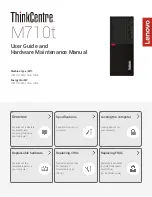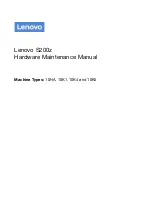
Peripherals
2-14
CA386-N1 REFERENCE MANUAL
2.7.1 ROM Disks
The CA386-N1 is normally configured with two ROM Disks (
C:
and
D:
) stored in Flash. Currently the only way
in which to put files on these drives is to generate a new disk “image” using a special utility (
DISK_IMG.BAT
)
and then downloading this disk image to the board via the boot loader.
NOTE: Application programs cannot currently write to the ROM Disks. There is a special segment of Flash
reserved for application reading and writing, but this is not part of the DOS file system.
The utility
DISK_IMG.BAT
located in the
rdos
directory of the CA386-N1 Companion Diskette installation is
used to create new disk images in the form of
.HEX
files. These are then downloaded to the CA386-N1 using the
Flash loader (see
Section 2.6, Flash Loader
on how to use the Flash loader).
The following steps are used to create and download a new Flash disk by creating a new disk image:
•
Copy whichever files you wish to be on the new
C:
and
D:
drives to the
C_DISK
and
D_DISK
directo-
ries respectively (under
\ca386\rdos\
, or wherever you installed the Companion Diskette).
•
Run the
DISK_IMG.BAT
script (in the
ca386\rdos\
directory).
•
This will create various
.HEX
files which can be downloaded to create new ROM Disks and O/S’s.
See the
readme
file in
ca386\rdos\
for a description of all the options for the
DISK_IMG.BAT
script. Follow the instructions for downloading these
.HEX
files to the Flash loader (see
Section 2.6,
Flash Loader
).
NOTE: You must power-cycle the CA386-N1 between each
.HEX
file download.
2.8 Peripherals
The built-in peripherals of the CA386-N1 include:
•
Interrupt Control Unit
•
Timer/Counter Unit
•
Asynchronous Serial I/O (COM1, COM2)
•
Synchronous Serial I/O (SPI)
•
DMA Controller
These peripherals are described fully in the Intel386EX Embedded Microprocessor Hardware Reference and
other documentation on the 80x86 architecture. The details of the Asynchronous Serial I/O are described below
since they differ somewhat from a standard PC.
All standard PC IO addresses supported by the 386ex are in the normal places. Extended IO address mode is dis-
abled at boot, but can be re-enabled by any application that requires it.
Summary of Contents for CA386-N1
Page 1: ...CA386 N1 Networked Embedded PC REFERENCE MANUAL AESTHETICS INC VERSION 1 0 ...
Page 2: ......
Page 3: ......
Page 6: ......
Page 24: ...Mechanical Information 1 16 CA386 N1 REFERENCE MANUAL ...



































